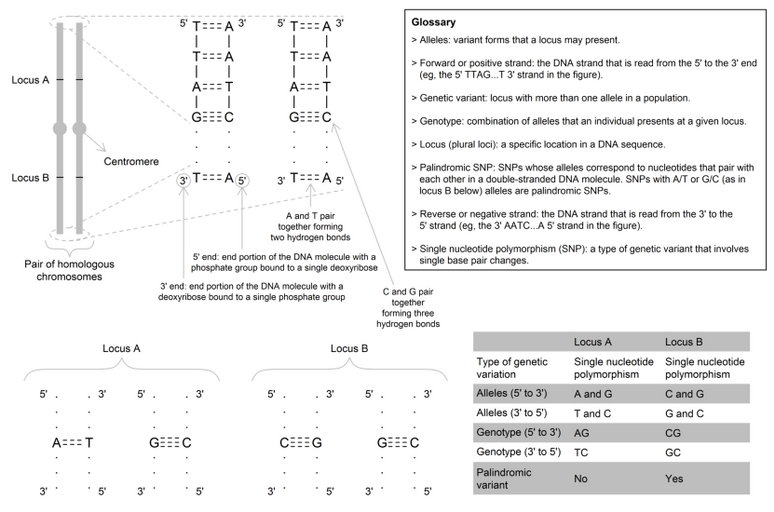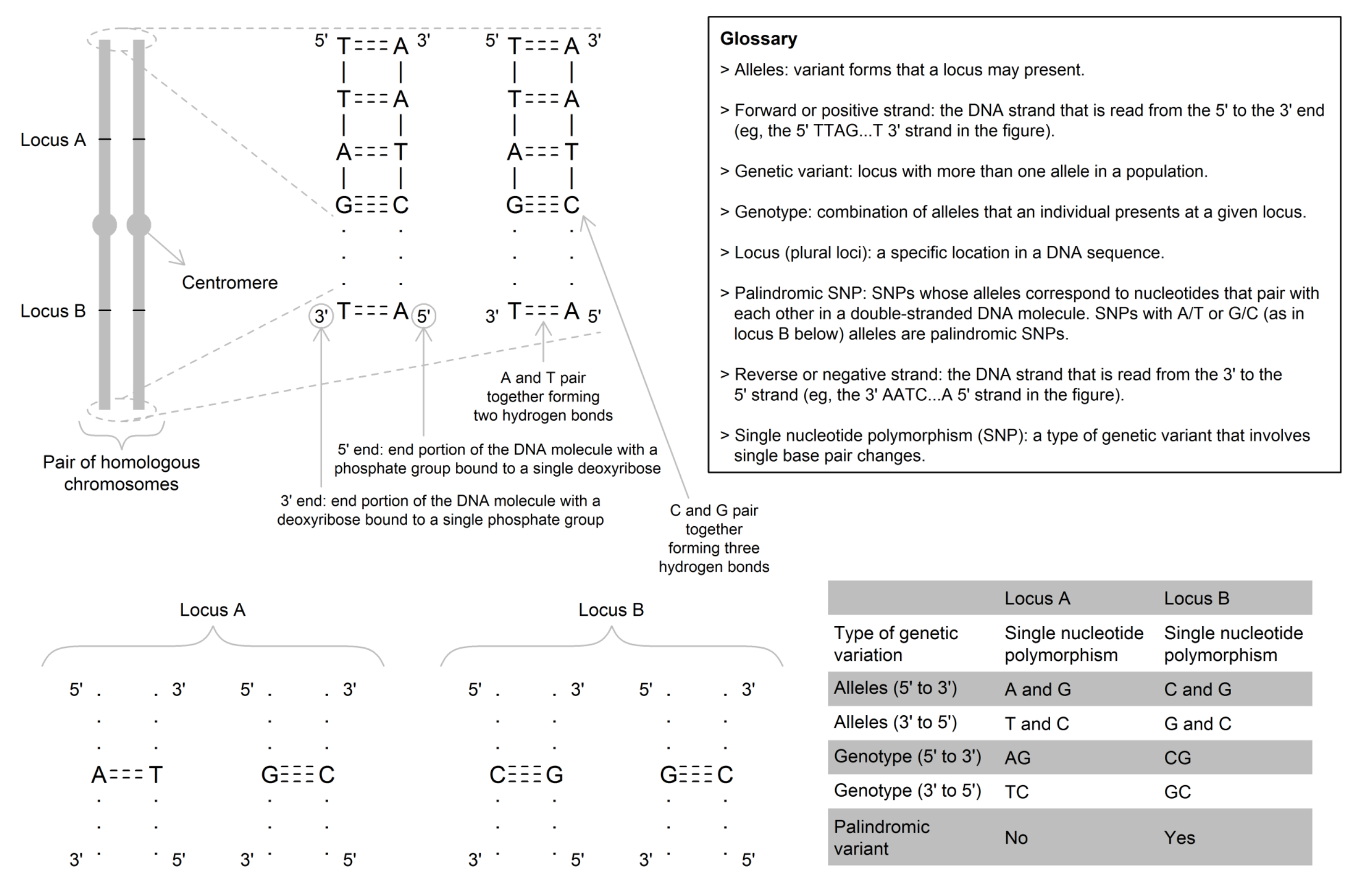DNA is a molecule that contains the genetic instructions used in the development and functioning of all living organisms. The main role of DNA is the long-term storage of information. It contains the template needed to construct other components of cells, including ribonucleic acid (RNA) and protein molecules, as well as regulatory mechanisms. DNA has four nucleotide bases: Adenine (A), Thymine (T), Guanine (G) and Cytosine (C). The two strands of DNA in the double-helix structure are complementary (sense and anti-sense strands) such that A binds with T and G binds with C.
Natural variation in DNA sequences is assayed and tested for association with phenotypes. Variants (most commonly single nucleotide polymorphisms (SNPs)) are used as instrumental variables (IVs) within MR analyses. DNA has a double helix structure, formed of two linked strands of nucleotides that run in opposite directions - either from the five- prime (5’) to the three-prime (3’) (also known as sense or forward/positive direction) or from 3’ to 5’ (also known as anti-sense or reverse), as shown in Figure 1.1. The importance of this to MR is in relation to harmonizing alleles encoded differently (on either forward or reverse strand) in different studies for two-sample MR.

References
Other terms in 'Useful genetic terms ':
- Allele
- Chromosome
- Cis- and trans-variants
- Copy number variation
- Gene
- Genetic variant
- Genotype
- Haplotype
- Heterozygous or Heterozygote
- Homozygous or Homozygote
- Linkage disequilibrium (LD)
- Locus
- Palindromic single nucleotide polymorphism (SNP)
- Polygenic risk score (PRS)
- Polymorphism
- Rare variants
- Single nucleotide polymorphism (SNP)

